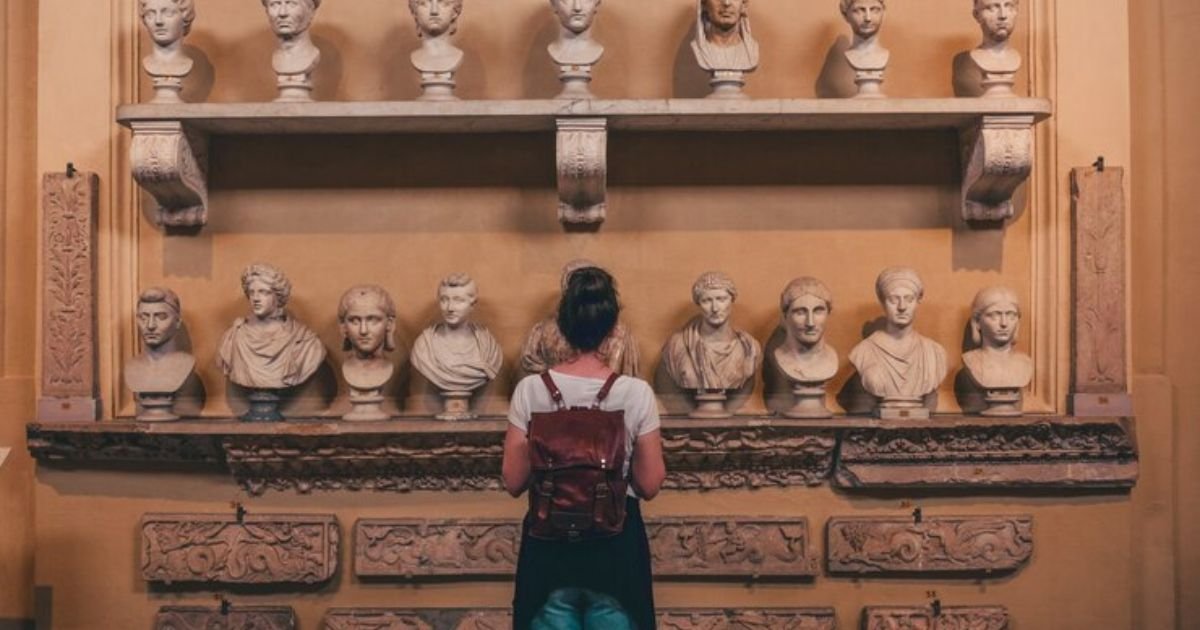Art has long been a powerful tool for expressing the human experience, and ancient art forms serve as windows into early societies, beliefs, and ways of life. These creations are more than just relics; they capture unique cultural perspectives, spiritual beliefs, and the essence of civilizations that laid the foundation for modern society. Ancient art spans various media and regions, from cave paintings to monumental sculptures. In this article, we will delve into the fascinating world of ancient artz, exploring their origins, meanings, and enduring influence on art and culture today.
Origins of Ancient Art: A Journey Back in Time
Ancient art dates back to prehistoric times, when early humans began using visual elements to represent their lives and surroundings. These artworks were often created for spiritual or ritualistic purposes, with some intended to record events or tell stories. The earliest examples of ancient art include cave paintings, carvings, and sculptures that give insight into the lives of early human societies.
The Role of Religion in Ancient Art
Many ancient artworks were deeply rooted in religious beliefs and practices. Cultures used art to communicate with their gods, illustrate creation myths, and honor their ancestors. The Egyptians, for instance, used elaborate tomb paintings and sculptures to honor their gods and provide for the deceased in the afterlife. Religious art was also prominent in Mesopotamia, Greece, and India, where art often depicted deities, myths, and sacred symbols.
Egyptian Art: Symbolism and Immortality
Ancient Egyptian art is renowned for its highly symbolic nature and focus on immortality. The Egyptians believed in an eternal afterlife, and their art reflects this ideology. Tomb paintings, statues, and hieroglyphics were meticulously crafted to ensure the deceased would enjoy a prosperous afterlife. Symbols like the ankh (representing life) and the eye of Horus (protection) were central to Egyptian iconography and conveyed deeper spiritual meanings.
Mesopotamian Art: The Dawn of Civilization
Mesopotamia, often referred to as the “cradle of civilization,” was home to some of the earliest known art forms. The art of Mesopotamia includes monumental architecture, intricate carvings, and sculptures that reflect the region’s political power and religious devotion. The Ziggurat of Ur, for example, is a massive structure dedicated to the moon god Nanna, showcasing the Mesopotamians’ architectural and artistic ingenuity.
Greek Art: The Birth of Realism and Humanism
Ancient Greek art is celebrated for its emphasis on realism and the human form. Unlike other ancient cultures that focused on symbolism, Greek artists aimed to depict the world and people in a lifelike manner. Sculptures like the Discobolus (Discus Thrower) demonstrate a keen understanding of anatomy and movement, capturing the beauty of the human body. Greek art also explored themes of heroism, mythology, and philosophy, laying the groundwork for Western art traditions.
Roman Art: Practicality and Power
Building upon Greek artistic traditions, the Romans adapted these styles to suit their own society’s values. Roman art is known for its practicality, often used to communicate the power and grandeur of the Roman Empire. Busts of emperors, public monuments, and frescoes in affluent homes conveyed messages of authority and culture. Roman artists also excelled in creating realistic portraits, a reflection of their society’s focus on individuality and legacy.
Indian Art: Spirituality and Philosophy
Ancient Indian art is deeply intertwined with spirituality, focusing on representations of gods, goddesses, and scenes from Hindu, Buddhist, and Jain traditions. Stupas, temples, and intricate sculptures illustrate the rich philosophical and spiritual heritage of India. The Ajanta and Ellora caves, for example, are adorned with detailed carvings and paintings that depict the Buddha’s life and teachings, showcasing India’s dedication to religious art.
Chinese Art: Harmony and Nature
In ancient China, art was closely linked to philosophical concepts such as harmony, balance, and reverence for nature. Chinese artists often created landscapes, pottery, and calligraphy that reflected Taoist and Confucian ideals. Nature-inspired motifs like mountains, rivers, and animals are common in Chinese art, emphasizing the importance of living in harmony with the environment.
Mayan and Aztec Art: Mysticism and Rituals
Ancient Mesoamerican cultures, including the Mayans and Aztecs, produced intricate art that reflected their mystical beliefs and complex social structures. The Mayans excelled in stone carvings, pottery, and murals that depicted gods, rituals, and astronomical events. The Aztecs, on the other hand, are known for their powerful stone sculptures and monumental architecture, such as the Templo Mayor, which symbolized their religious dedication and societal hierarchy.
African Art: Connection to Ancestry and Nature
Ancient African art is diverse and vibrant, often emphasizing a connection to ancestry, community, and the natural world. African artists created sculptures, masks, and textiles that played significant roles in rituals and ceremonies. These artworks, like the Nok terracotta sculptures, reflected themes of fertility, power, and spirituality, highlighting Africa’s rich cultural heritage.
Symbolism in Ancient Art
Ancient artists used symbolism extensively to convey complex ideas and emotions. Whether it was the use of specific colors, shapes, or symbols, each element held meaning. For example, in Egyptian art, the color green symbolized fertility and rebirth, while in Chinese art, the dragon represented power and good fortune. Understanding these symbols helps us decode the values and beliefs of ancient cultures.
Techniques and Materials of Ancient Artists
Ancient artists worked with various materials, including stone, clay, metal, and wood, often depending on what was available in their region. The techniques they developed, such as carving, molding, and painting, demonstrate remarkable skill and innovation. For example, Greek sculptors mastered bronze casting, allowing them to create highly detailed and lifelike statues.
The Influence of Ancient Art on Modern Culture
The impact of ancient art can still be seen in modern culture, from architectural styles to artistic motifs. Greek and Roman architectural elements, such as columns and arches, are commonly used in Western buildings. The themes of heroism, beauty, and spirituality found in ancient art also continue to inspire artists today.
Ancient Art Preservation and Challenges
Preserving ancient art is essential for maintaining a connection to the past, but it comes with challenges. Environmental factors, pollution, and human intervention threaten the longevity of these treasures. Organizations and archaeologists work to preserve ancient artifacts and sites through conservation techniques, though some works remain at risk of deterioration.
Why Ancient Art Matters Today
ancient artz offers us more than historical insight; it provides a sense of shared humanity. By studying ancient art, we gain a deeper understanding of human creativity, resilience, and the cultural roots that continue to shape societies. It serves as a reminder of our shared heritage and the enduring power of artistic expression.
Conclusion
The world of ancient art is a testament to the diversity and richness of human history. From the intricate carvings of Mesopotamia to the lifelike sculptures of Greece, each piece tells a story of the people who created it. Ancient art not only connects us to our ancestors but also inspires us to appreciate and protect our artistic heritage. As we continue to study and preserve these masterpieces, we gain valuable insights into the enduring human desire to create, communicate, and transcend time.
FAQs
What defines ancient artz?
Ancient art includes creations from early civilizations, often centered on religious or cultural beliefs, spanning various forms like sculpture, painting, and architecture.
Why is symbolism important in ancient artz?
Symbolism allowed ancient artists to convey complex ideas and beliefs, often embedding cultural, spiritual, or social meanings in their work.
How did ancient art influence modern art?
Modern art has drawn inspiration from ancient styles, techniques, and motifs, especially in areas like realism, symbolism, and architectural elements.
What materials did ancient artists use?
Artists used materials such as stone, clay, bronze, wood, and precious metals, depending on regional resources and the artwork’s purpose.
Why is ancient artz preservation important?
Preserving ancient art helps maintain a connection to the past, allowing future generations to appreciate and learn from historical cultures and artistic achievements.









